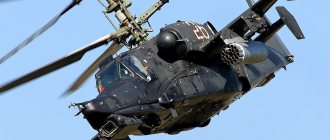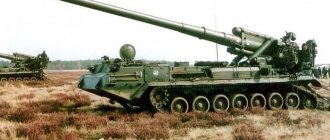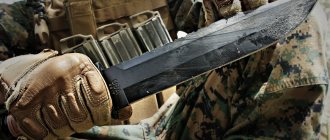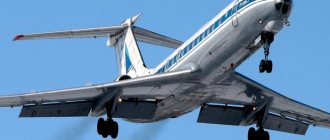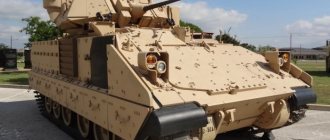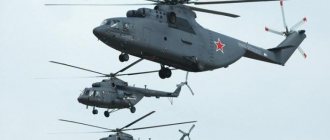Helivale
- Russia
bottlenose dolphin
Ukrainian helicopters
Thousands of helicopters - from small ones, weighing several tens of kilograms, to multi-ton giants - regularly plow the expanses of the ocean of air. A helicopter, unlike an airplane, does not need airfields, since it is capable of taking off, landing vertically, moving horizontally at different speeds and hovering in the airspace in one place. Such properties of a helicopter make it a valuable, and in some cases, not at all replaceable machine.
Helicopters transport passengers and cargo to remote villages located among forests or mountains, detect schools of fish in the sea, and help fight forest fires and floods. With their help, they successfully control field pests, carry out gravimetric and geophysical surveys of the area, check high-voltage power lines for serviceability, etc. In recent years, they have been systematically used as cranes on construction sites, when laying pipelines, and so on. Helicopters are an important component of the air force in many countries around the world. Scientists around the world are responsible for the creation of the scientific theory of helicopters, without which it would have been impossible to achieve such successes in modern helicopter engineering.
Traditionally, the entire helicopter market is divided into two parts: civil and military. The civilian, in turn, maintains helicopters from government agencies and commercial companies that provide emergency assistance and public safety. Rapidly developing areas in the civil sector are transport helicopters with luxury cabins for VIP flights and helicopters for servicing offshore oil platforms.
The civilian spectrum of the market is far superior to the military. However, in real monetary terms, according to experts, military helicopters account for more than 70 percent of the contract value of deliveries. The main reason for this is the widespread aging of military helicopters of previous generations. Many countries around the world have approached the cyclical need for a global renewal of their helicopter fleets.
Russian Helicopters
Despite all the crises, our helicopter industry is still developing, albeit not at the rate we would like, but, most importantly, there is a trend of forward movement. Helicopter sales volumes in well-known corporations in our country are constantly increasing. The introduction and implementation of many programs for the sale of new and modernization of existing aircraft continues successfully. Effective development of the industry in the future requires a constant increase in orders with government support.
Many holdings have enormous potential for development, since the domestic helicopter industry is one of the leading in the world. Many scientific and design solutions of Russian and Soviet designers are still used abroad. Our Mi-8, Mi-12 can be found in any country. They have been incredibly popular for decades.
Of course, not everything has yet been realized. We face serious challenges in reforming the industry, which should entail financial and production indicators. It is important that the Russian aircraft operator has the opportunity to buy the helicopter that he needs. We need to expand our presence in the global helicopter market. To achieve this goal, it is necessary to overcome the technical gap from the world's leading airlines, primarily in terms of equipping the industry with modern equipment.
The reconstruction of the Russian helicopter industry is a long-simmering problem that needs to be solved. Subsequent activities in a modern market economy while maintaining the structure of the planned system are greatly complicated, but clear improvements are still noticeable.
Key companies
The Russian Helicopters holding company is the only developer and manufacturer of helicopters in Russia, as well as one of the few companies in the world with the capabilities to design, manufacture, test and maintain modern civil and military helicopters.
General Director of the Russian Helicopters holding company – Nikolay Aleksandrovich Kolesov
.
History of the holding
Russian Helicopters was founded in 2007 and is part of the Rostec State Corporation. The holding united the assets of all helicopter manufacturing plants in Russia; enterprises producing components; companies providing after-sales support for helicopters in the Russian Federation and abroad. The holding's research and development work is carried out in two of the largest world-class helicopter manufacturing schools: the Moscow Helicopter Plant named after. M.L. Mil and OKB im. N.I. Kamova. The number of employees of the holding is about 40 thousand people.
The need to consolidate the industry, develop unified technological processes and adopt unified solutions for civil and military products became the reasons for the creation of the holding.
By 2011, under the leadership of the Rostec State Corporation, the process of combining assets was completed. During this time, Russian Helicopters strengthened cooperation with foreign partners, increasing the amount of equipment supplied abroad. In addition, the holding received the opportunity to exchange the best innovative developments.
"Russian Helicopters" today
The company is one of the world leaders in the most promising and dynamically developing areas, including the segments of medium-heavy, super-heavy, and attack helicopters.
The products of the Russian Helicopters holding company occupy 90% of the Russian helicopter market; the company accounts for about 10% of global sales. Russian Helicopters enterprises produced 22% of the world fleet of military helicopters, while the holding's products account for 32% of the world fleet of combat helicopters and 42% of medium military transport helicopters. In the world fleet of civil helicopters, the products of the Russian Helicopters holding company account for 49% of heavy helicopters and 65% of medium helicopters (with take-off weight from 7 to 20 tons).
More than 8,000 Russian-made helicopters are operated in more than 100 countries around the world.
Products of Russian Helicopters
The range of products produced by Russian Helicopters mainly includes medium and heavy class vehicles for civil and military purposes. In the near future, the holding plans to increase production volumes of light-duty models, which should help expand its presence in the international market. In particular, we are talking about such models as Ansat and Ka-226T. The holding's new product in the light segment is the single-engine multi-purpose helicopter VRT500.
The new middle-class aircraft are the Ka-62, Mi-171A2, and Mi-38. Currently in serial production are the following models: Ka-226, Ka-27, Ka-29, Ka-31, Ka-32A11BC, Ka-52 “Alligator”, “Ansat”, various modifications of the Mi-8/17, Mi -26(T), Mi-35M, Mi-28N “Night Hunter”.
The latest attack helicopter Mi-28NM and combat training helicopter Mi-28UB are being mass-produced.
Developments and innovations
Russian Helicopters is actively re-equipping and modernizing its enterprises and is working on a number of promising projects. Key areas of development: safety, efficiency, environmental friendliness, intellectual component and development of basic technologies that will be in demand when creating new helicopters.
Currently, Russian Helicopters has begun implementing the innovative program “Unmanned Systems”, which provides for the creation of a model range of competitive unmanned helicopter systems for civil and military (special) purposes, medium and long range.
Much attention is paid to the formation of the innovative infrastructure of Russian Helicopters, and therefore in Tomilino, near Moscow, on the basis of two famous design schools Mil and Kamov, the National Helicopter Engineering Center was created, where experimental research, pilot production and flight test centers are already functioning today.
The holding includes:
JSC Moscow Helicopter Plant named after. M.L. Mil" JSC "Kamov" JSC "Ulan-Ude Aviation PJSC "Rostvertol" JSC "Kumertau Aviation Production Enterprise" PJSC AAK "Progress" named after. N.I. Sazykin JSC "Aviation Gearboxes and Transmissions - Perm Motors" JSC "Stupino Machine-Building Production Enterprise" JSC "Helicopter Service JSC" 356 Aviation Repair JSC "810 Aviation Repair JSC" 12 Aviation Repair LLC "VR-Technologies" LLC "Purchase and Logistics Center for Helicopter Manufacturing" industry" JSC "HeliVert"
Website: https://www.russianhelicopters.aero/
HELICOPTER BELL 427 UP TO 6 PASSENGERS
The Bell 427, a twin-engine aircraft made by Pratt & Whitney in Canada, can continue to fly with one engine running. This carefully designed machine can be adapted to perform various tasks and operations, making it one of the best light twin engine helicopters. Crew: 1- 2 pilots, capacity: 6 passengers, length: 12.99 m, main rotor diameter: 11.28 m, tail rotor: 1.73 m, height: 3.32 m, weight: 1 751 kg, maximum take-off weight: 2,971 kg, fuel tank volume: 770 l, cargo compartment dimensions: height: 1.3 m, maximum speed: 259 km/h, cruising speed: 246 km/h, range: 716 km, flight duration: 4 hours, maximum flight altitude: 3,050 m.
HELICOPTER BELL 429 UP TO 7 PASSENGERS
The helicopter is manufactured by Bell Helicopter Textron, the passenger cabin of which can comfortably accommodate up to 6 + 1 people. This is a fast and reliable helicopter. High cruising speed, reliability and large capacity are the distinctive characteristics of this model. The impetus for the development of the Bell 429 helicopter model was the demand for a modern medical helicopter. The Bell 429 was conceived as a longer version of the Bell 427 helicopter. The Bell 429 features a completely new and improved modular airframe, a four-bladed main rotor and composite blades with curved tips to reduce noise, and two Pratt & Whitney Canada PW207D2 engines. The X-shaped tail rotor consists of two-blade propellers. The first Bell 429 helicopter took off in 2007. The main tests took place in February 2008. The Bell 429 helicopter is certified by the Russian Federation under the Instrument Flight Rules by one pilot in category A and is capable of continuing flight with one engine inoperative. According to its technical data, this maintenance model is the second helicopter in the world after the Eurocopter EC 175 operating the MSG-3 system. Number of doors: 7. Flight range 754 km, non-stop flight duration up to 4 hours 27 minutes, cruising speed 278 km. hour, maximum speed 290 km. hours, maximum height 5698 m. Fuselage length 13.11 m, diameter with propeller 12.5 m, width 2.67 m, height 4.04 m, empty weight 1950 kg, max. Take-off weight 3175 kg.
HELICOPTER BELL 407 UP TO 6 PASSENGERS
A multifunctional, powerful single-engine helicopter manufactured by Bell Helicopter Textron, the spacious and quiet passenger cabin of which can comfortably accommodate up to 6 people. The first such model was produced in 1994. The Bell 407 helicopter became most famous for its round-the-world flight, which passed through both poles of the Earth. With only two crew members, the car took off from the airport in Fort Worth (Texas, USA) on December 5, 2006 and returned back on March 23, 2007. During 189 flights, several dozen landings were made, including at the north and south poles, and over 57,900 km were covered. The net flight time was 300 hours. This model is ideal for air travel and long-distance flights. The spacious interior is equipped with wide windows that provide panoramic views. The Bell 406 helicopter can serve as an excellent means of delivering cargo by air. It has a wide luggage compartment and excellent load capacity. Standard fuel capacity is 477 liters; At the customer's request, an additional tank with a capacity of 75 liters can be placed in the rear luggage compartment.


